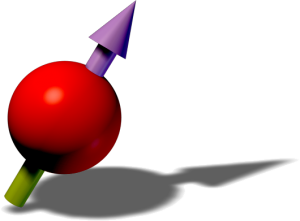by L. Su, A. Douglas, M. Szurek, R. Groth, S. F. Ozturk, A. Krahn, A. H. Hebert, G. A. Phelps, S. Ebadi, S. Dickerson, F. Ferlaino, O. Markovic, M. Greiner
Abstract:
In quantum mechanical many-body systems, long-range and anisotropic interactions promote rich spatial structure and can lead to quantum frustration, giving rise to a wealth of complex, strongly correlated quantum phases. Long-range interactions play an important role in nature; however, quantum simulations of lattice systems have largely not been able to realize such interactions. A wide range of efforts are underway to explore long-range interacting lattice systems using polar molecules, Rydberg atoms, optical cavities, and magnetic atoms. Here, we realize novel quantum phases in a strongly correlated lattice system with long-range dipolar interactions using ultracold magnetic erbium atoms. As we tune the dipolar interaction to be the dominant energy scale in our system, we observe quantum phase transitions from a superfluid into dipolar quantum solids, which we directly detect using quantum gas microscopy. Controlling the interaction anisotropy by orienting the dipoles enables us to realize a variety of stripe ordered states. Furthermore, by transitioning non-adiabatically through the strongly correlated regime, we observe the emergence of a range of metastable stripe-ordered states. This work demonstrates that novel strongly correlated quantum phases can be realized using long-range dipolar interaction in optical lattices, opening the door to quantum simulations of a wide range of lattice models with long-range and anisotropic interactions.
Reference:
Dipolar quantum solids emerging in a Hubbard quantum simulator,
L. Su, A. Douglas, M. Szurek, R. Groth, S. F. Ozturk, A. Krahn, A. H. Hebert, G. A. Phelps, S. Ebadi, S. Dickerson, F. Ferlaino, O. Markovic, M. Greiner,
Nature, 622, 724-729, 2023.
L. Su, A. Douglas, M. Szurek, R. Groth, S. F. Ozturk, A. Krahn, A. H. Hebert, G. A. Phelps, S. Ebadi, S. Dickerson, F. Ferlaino, O. Markovic, M. Greiner,
Nature, 622, 724-729, 2023.
Bibtex Entry:
@article{su2023dqs,
title={Dipolar quantum solids emerging in a Hubbard quantum simulator},
author={L. Su and A. Douglas and M. Szurek and R. Groth and S. F. Ozturk and A. Krahn and A. H. Hebert and G. A. Phelps and S. Ebadi and S. Dickerson and F. Ferlaino and O. Markovic and M. Greiner},
year={2023},
month = {Oct},
abstract = {In quantum mechanical many-body systems, long-range and anisotropic interactions promote rich spatial structure and can lead to quantum frustration, giving rise to a wealth of complex, strongly correlated quantum phases. Long-range interactions play an important role in nature; however, quantum simulations of lattice systems have largely not been able to realize such interactions. A wide range of efforts are underway to explore long-range interacting lattice systems using polar molecules, Rydberg atoms, optical cavities, and magnetic atoms. Here, we realize novel quantum phases in a strongly correlated lattice system with long-range dipolar interactions using ultracold magnetic erbium atoms. As we tune the dipolar interaction to be the dominant energy scale in our system, we observe quantum phase transitions from a superfluid into dipolar quantum solids, which we directly detect using quantum gas microscopy. Controlling the interaction anisotropy by orienting the dipoles enables us to realize a variety of stripe ordered states. Furthermore, by transitioning non-adiabatically through the strongly correlated regime, we observe the emergence of a range of metastable stripe-ordered states. This work demonstrates that novel strongly correlated quantum phases can be realized using long-range dipolar interaction in optical lattices, opening the door to quantum simulations of a wide range of lattice models with long-range and anisotropic interactions.},
eprint={2306.00888},
archivePrefix={arXiv},
primaryClass={cond-mat.quant-gas},
journal={Nature},
volume = {622},
pages = {724-729},
arXiv = {http://arxiv.org/abs/2306.00888},
url = {https://www.nature.com/articles/s41586-023-06614-3},
doi = {https://doi.org/10.1038/s41586-023-06614-3}
}
